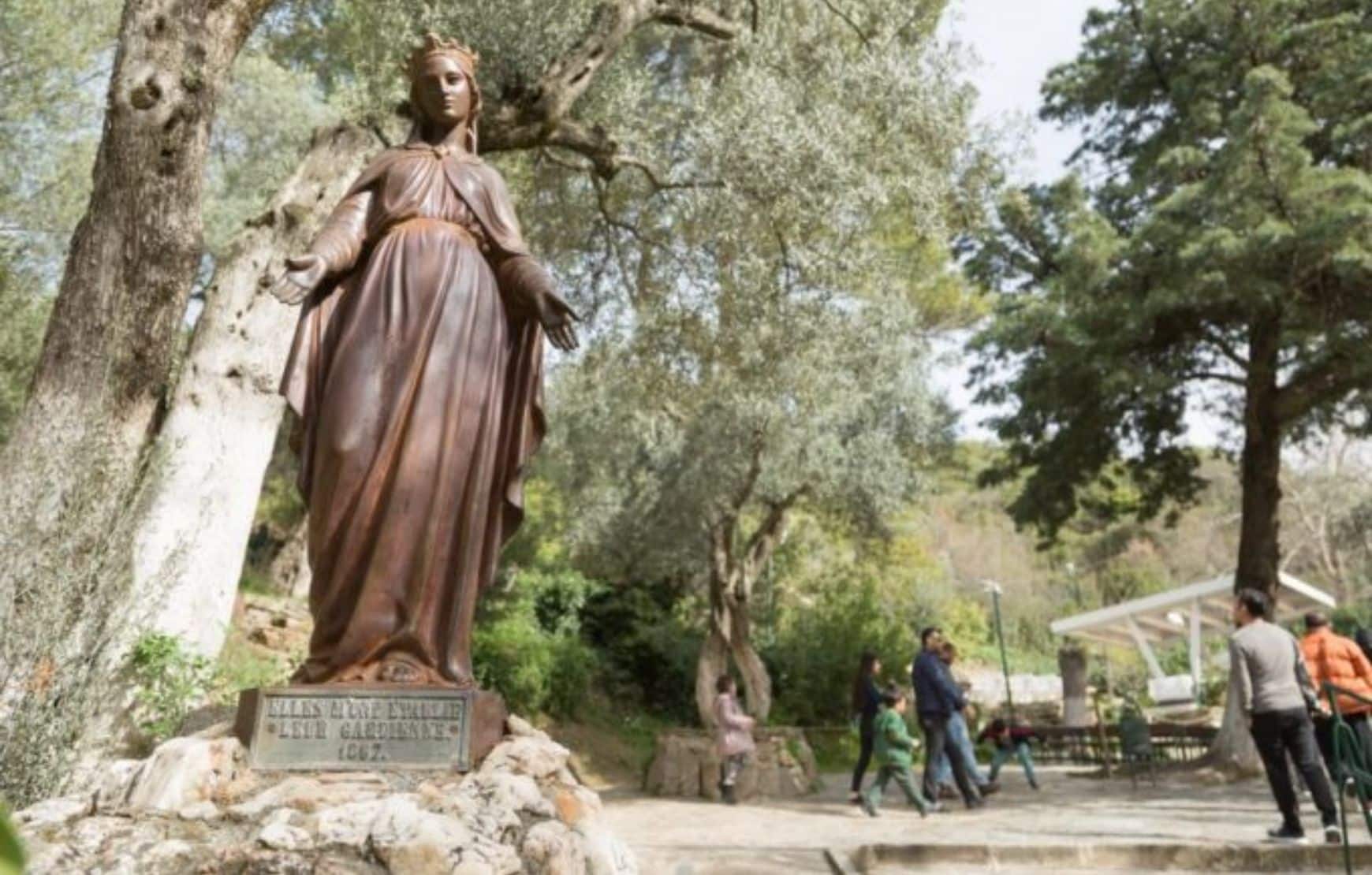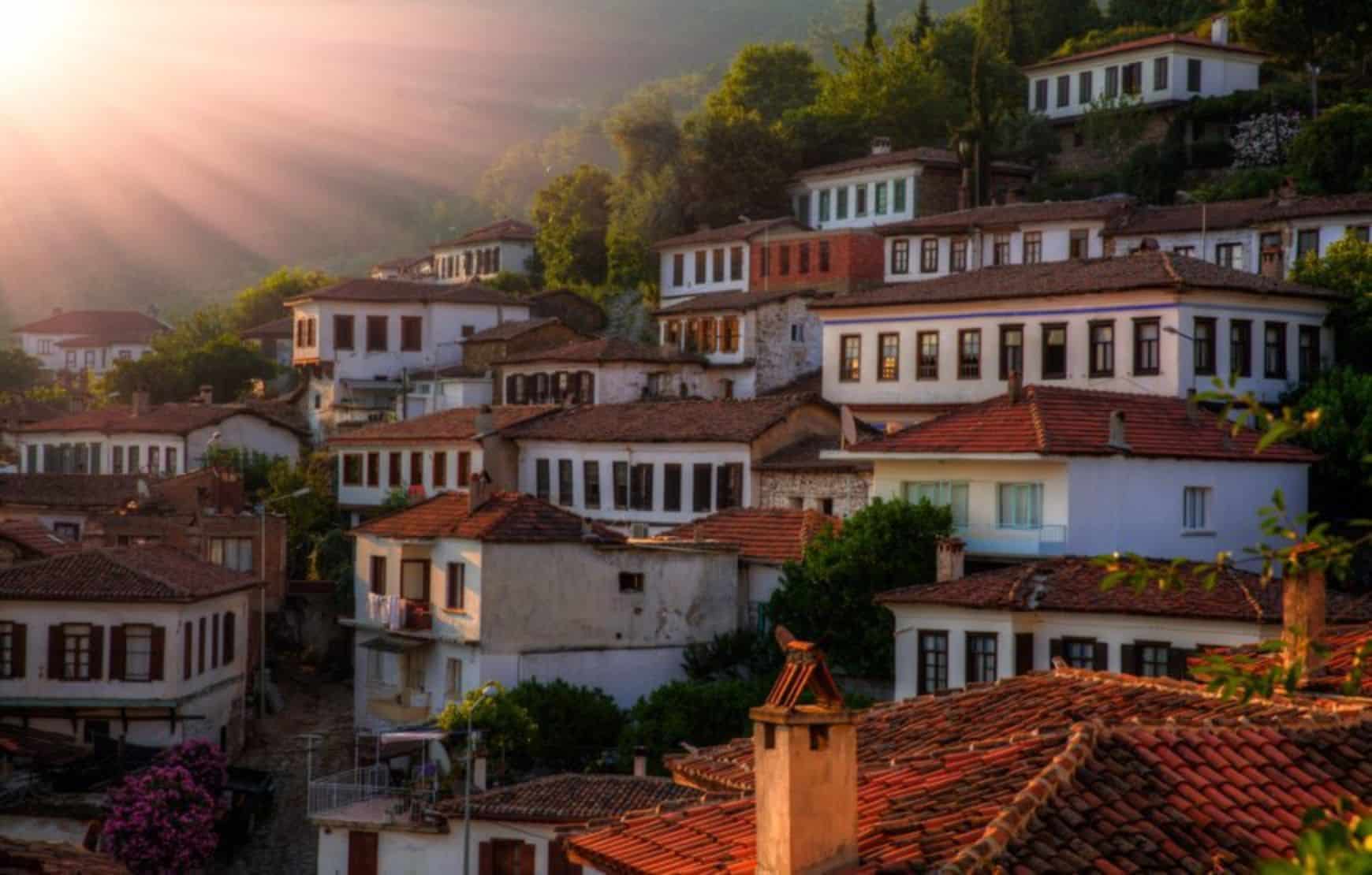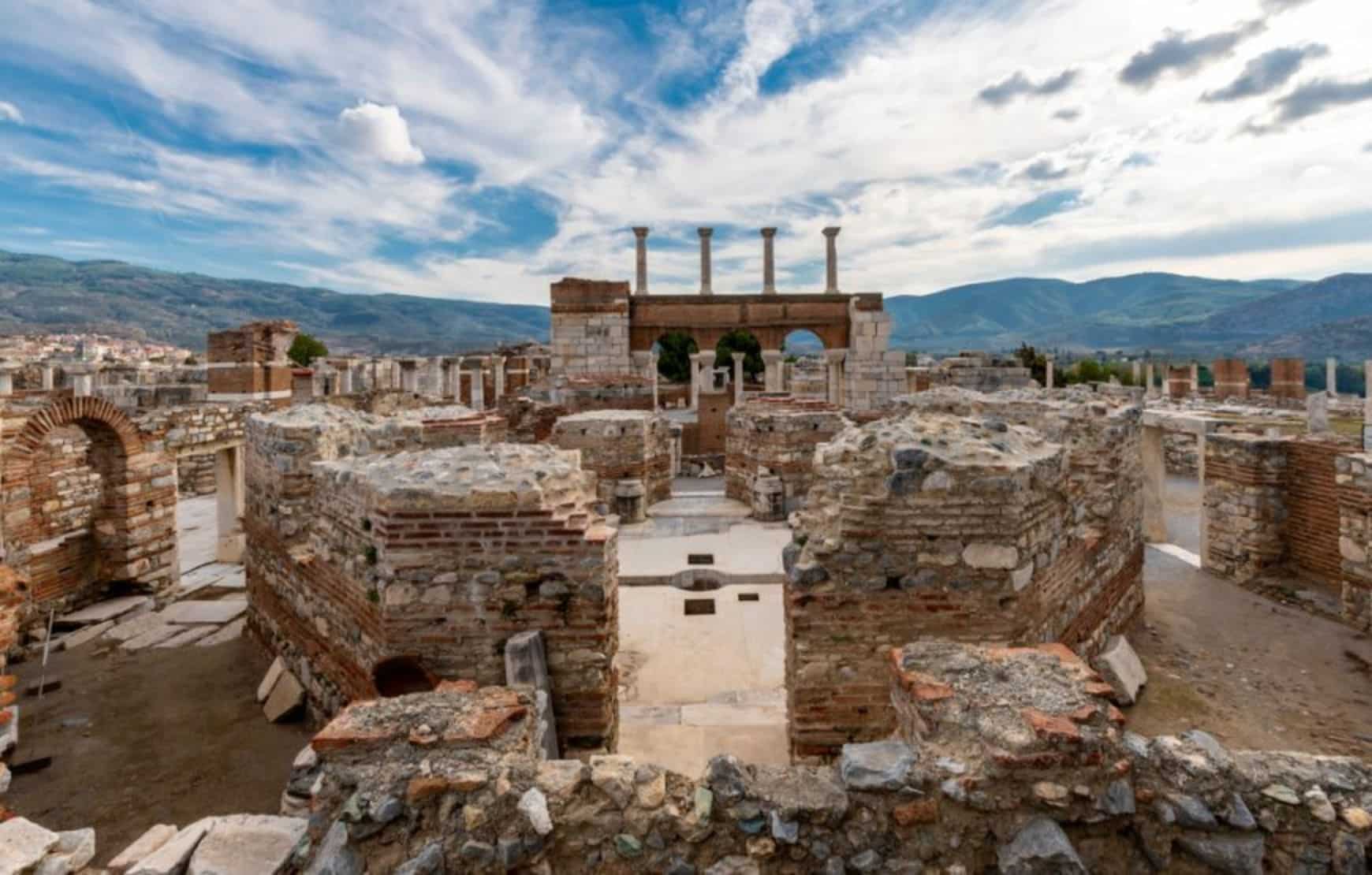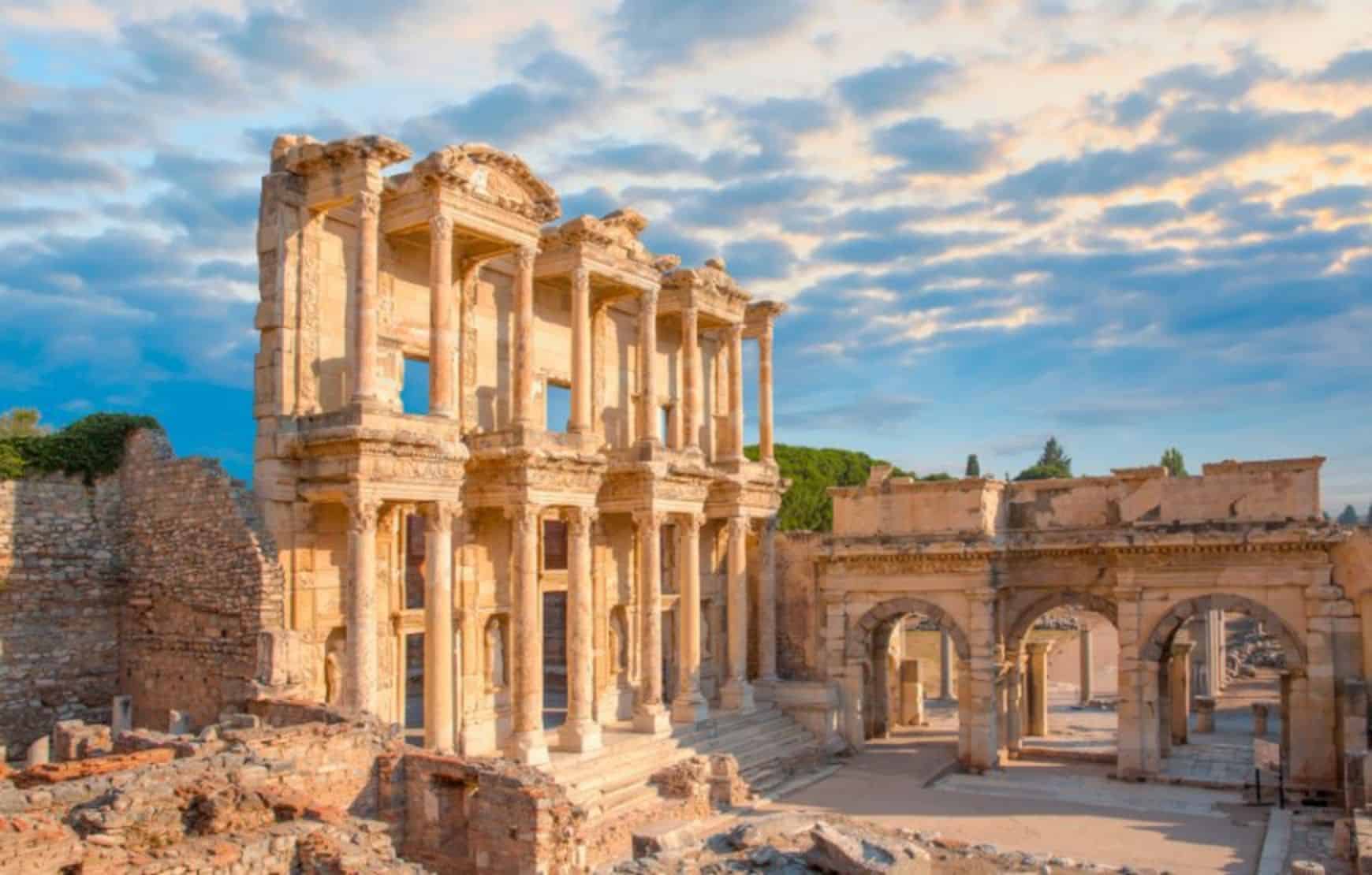The history of Izmir’s Selcuk district goes back to 8,600 years ago. It is one of the world’s most important centres in archaeology, history, religion, and culture. We are talking about geography adorned with historical textures, where an uninterrupted life has continued since the end of the Bronze Age. It’s time to explore! In this article, you will be informed about the history of Selcuk and learn about Selcuk Attractions.
Selcuk has multi-layered, rich cultural and historical values that we do not know much about. All of them are beautiful and worth seeing. It is a unique place that combines Prehistoric, Archaic, Classical, Hellenistic, Roman, Byzantine, Aydınoğulları, Ottoman, and modern-period ruins. There are a lot of things to do in this city. Let’s check Selcuk Attractions together!
Where is Selcuk?
Selcuk is a district and a town in the Izmir Province of Turkey. It is located in the inner regions of the province, to the northeast of the city of Izmir. The town is situated about 80 km (50 mi) from the city of Izmir, and it is a popular destination for tourists visiting the region, largely due to its proximity to the ancient city of Ephesus, one of the most famous archaeological sites in Turkey, which is located just a few kilometers outside of Selçuk. Additionally, Selçuk is home to several other important historical sites, such as the Temple of Artemis and the Basilica of St. John.
Selcuk or Ephesus: What is the real name of this town?
The ancient city of Ephesus was located in what is now modern-day Turkey and was an important city in the Roman Empire. The town near the ancient city is called Selçuk. It was named after the Seljuk Turks who conquered the area in the 11th century, the town of Selçuk is the modern-day settlement closest to the ancient site of Ephesus. And since Ephesus Ancient City is famous for the town, its name is often referred to as Selcuk Ephesus. So the real name of this town is Selcuk, while the ancient city nearby is Ephesus.
Selcuk is one of the world’s leading tourism centers where you can trace the past. Historical heritage is intertwined with today’s settlement. This geography, which we often look at, is very valuable. No other region in the world has such a pattern of settlement that lasted several thousand years and included various cultures.
This valuable geography, which has had an uninterrupted population since the Neolithic Age, has entered the UNESCO World Cultural Heritage after 21 years of waiting. Temple of Artemis, St. Jean Church, Ayasuluk Castle and Isa Bey Mosque, Ayasuluk Hill, Çukuriçi Tumulus, Ephesus Ancient City, and Virgin Mary’s House are on the UNESCO List today.
Are you coming to Selcuk from Kusadasi? Check our guide Selcuk: How to get from Kusadasi? – Transportation Guide
History of Selcuk
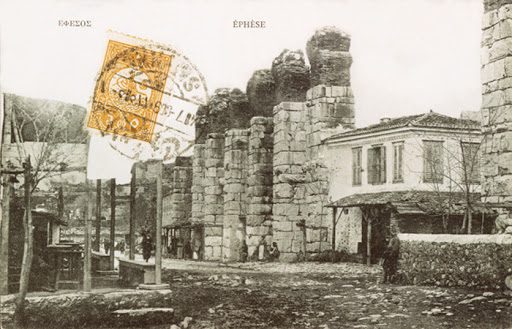
When Ephesus is mentioned, we think of the Ancient City of Ephesus. However, in ancient times, Ephesus was the name of geography that spanned 8 square kilometers, including the Ayasuluk Castle, the Temple of Artemis, and the present Ancient City of Ephesus. Moreover, Ephesus has moved 4 times throughout history due to geographical reasons and wars.
The dazzling structures we see in the Ancient City of Ephesus today are from the Roman period. The story of the rise of the settlement that grew around Ayasuluk Hill to become one of the megacities of the Roman Empire is quite long.
Ayasuluk Hill, with the castle in the center of Selçuk, was the first settlement, and it is known that Anatolian Tribes and Hittites lived here. It is thought to be Apasas, the capital of the Arzawa Kingdom, mentioned in Hittite inscriptions.
Apasas later became Ephesus. The region developed when the first colonists from the Greek island join Ephesus. When Kroisos, the King of Lydia, who was the first to use money in history, took over the region, he drove the city’s people to the plain around the Temple of Artemis, one of the 7 wonders of the ancient world, where II. Ephesus is established.
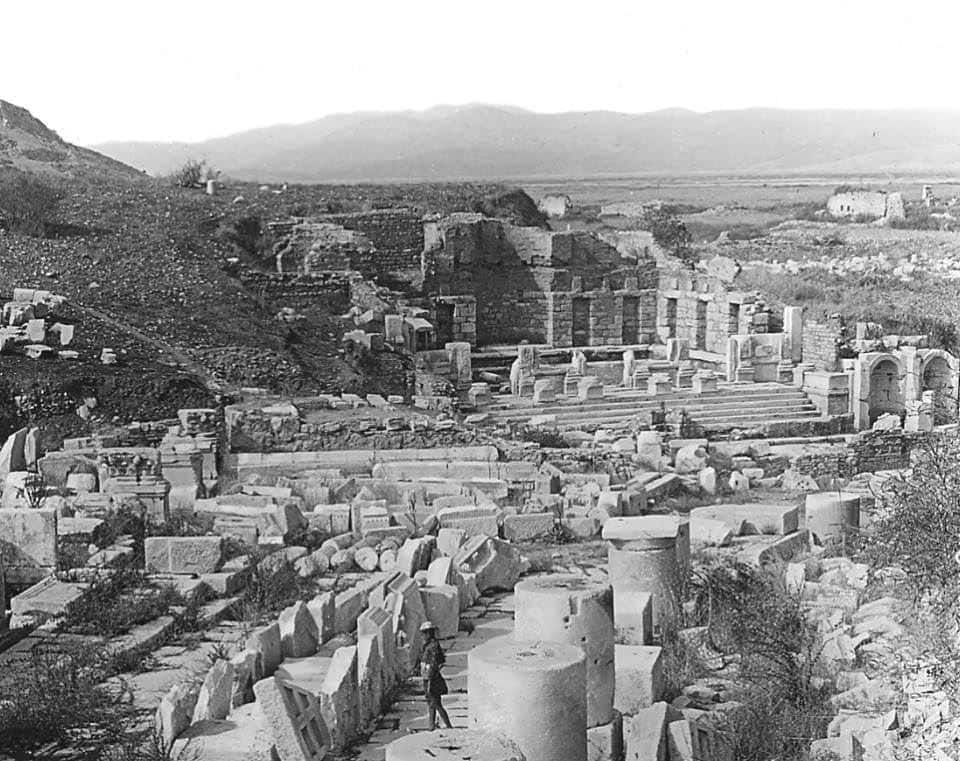
Later, Alexander the Great comes and takes the area. Lysimachus, one of the generals of Alexander the Great, changed the settlement’s location around Artemision and moved it to the current location of Ephesus, 2.5 km southwest, and III. establishes Ephesus.
The new city, which consists of streets that cut each other perpendicularly under the understanding of modern urbanism, developed a lot in the Hellenistic period and became one of the most important commercial ports of the Mediterranean. Masses of traders and foreigners flock to form a multi-ethnic population.
Ephesus was included in the Roman territory in 129 BC. Ephesus, which had one of the largest ports of the period, became one of the megacities of the empire as the capital of the province of Asia Minor, and its population reached 200,000 people. Saint Paul, who is considered the founder of Christianity in the 1st century, stays in Ephesus for 3 years and gives his famous sermons.
In the Byzantine Era, when the present port of Ephesus was filled with alluvium, the city was relocated and moved to Ayasuluk Hill, where Ephesus I was founded. Ephesus begins. During this period, one of the important saints of Christianity, St. Jean’s grave, was also here, and an important church was built on it.
The Seljuks came to the region at the beginning of the 14th century. Aydınoğulları defeated Byzantium, took the region, and used Ayasuluk, the center of the principality for a while. It continued to be used as Ayasuluk in the Ottoman Period.
On November 6, 1914, when the Party of Union and Progress changed the names of some towns and villages as the party’s general policy, the name of Ayasuluğ was changed to Selçuk, and it was connected to Şirince Municipality. Selçuk, which was known as Akıncılar for a while after the War of Independence, was connected to Kuşadası on January 1, 1943. Finally, Selçuk was connected to İzmir on 19 June 1957 and became a district.
What to do in Selcuk?
The ancient city of Ephesus is the main attraction and is a must-see for any visitor to Selçuk. This ancient city is one of the most famous archaeological sites in Turkey, with well-preserved ruins of a Roman city, including the impressive Library of Celsus, the Great Theater, and the Temple of Hadrian. Visitors can also explore the Basilica of St. John, which is believed to be the site of the apostle John’s tomb, and the House of the Virgin Mary, where it is said that Mary spent her final days. In addition, Selçuk also has a rich cultural heritage, with numerous traditional Turkish bazaars, restaurants, and cafes. Visitors can enjoy some of the local delicacies and purchase traditional Turkish souvenirs. Visitors also have the opportunity to participate in a traditional hammam (Turkish bath) experience. For the more adventurous, it’s also possible to go paragliding and diving.
Places to visit in Selcuk & Attractions
We have prepared a wide range of content for the taste of the Selcuk travel guide. Selcuk should be considered a large archaeological park where valuable monuments and heritage from the Greek, Roman, Byzantine, and Turkish periods are exhibited.
Ayasuluk Hill, located in the center of Selcuk, can be the tour’s starting point. Here Ayasuluk Castle and St. John’s Basilica.
After visiting this place, you can see the Isa Bey Mosque and Isa Bey Hamam on the west side of the hill. Before moving on to Ephesus, the nearby Temple of Artemis can be put on the route. Ephesus Ancient City is located 1 km ahead.
After leaving Ephesus, the House of the Virgin Mary can be visited. Seven Sleepers Cave and Pamucak Beach can be left at the end of the day. Sirince is the place I recommend for accommodation, which deserves to spend time on its own.
Ayasuluk Castle
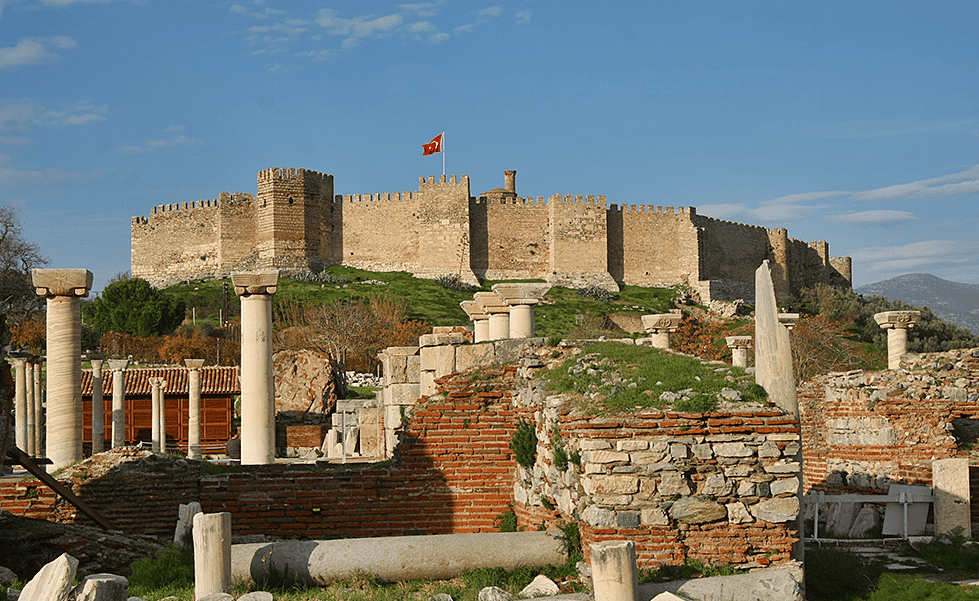
It is also known as Selcuk Castle. Ayasuluk Hill, the first settlement of Ephesus, is a precious archaeological site. Ayasuluk Castle, located on the hill to the left at the entrance of Selçuk, stands like a crown placed on Selçuk’s head on the summit of Ayasuluk Hill. There are 15 towers and 2 fortress gates from the Byzantine, Aydınoğulları, and Ottoman periods.
The condition of structures such as the Kale Mosque, the castle bath, and the cistern, which has a single dome and a partially intact minaret, is in good condition. It is in an exquisite location to watch the beauty of the geography and the historical texture from above. Selcuk Castle entrance is fee-free if you have a Basilica of St. John entrance ticket. It’s a combined ticket.
Basilica of St. John
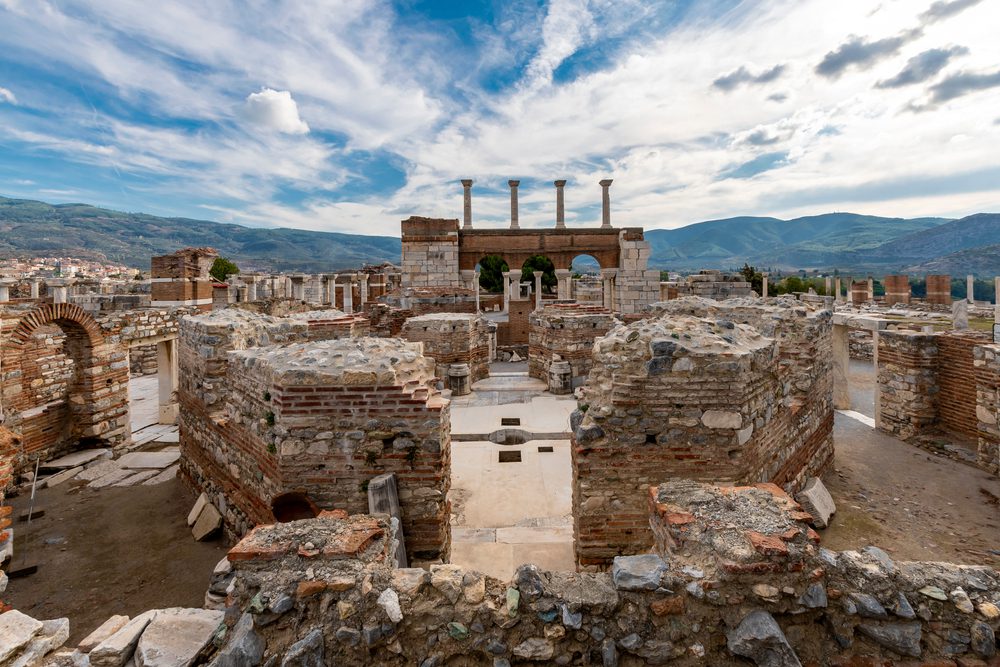
The Basilica of St. John is the largest religious building built in Ephesus after the Temple of Artemis. Hz. The tomb of Saint John (St. Jean Theologos), the youngest apostle of Jesus and one of the Bible writers, and the basilica built on it are some of the most valuable places on the list of places to visit in Selçuk.
According to the Christian belief, Hz. Jesus entrusted his mother to his favorite and youngest apostle, John. It is accepted that the Apostle John came to Ephesus with the Virgin Mary in 37-48 AD and lived and died here. After he died, he was buried on Ayasuluk Hill by his will.
With the spread of Christianity, first, a mausoleum was built, and later a basilica was built on it. In the 12th century, the remains of the holy tomb were moved to the Havariyun (Saints) Church in Istanbul. The church, built by the Byzantine Emperor Justinian and his wife Theodora, was designed with a cross plan. Cut stone blocks from the Temple of Artemis were used.
It has special importance as it has become a place of pilgrimage for Christians since the Middle Ages. Every year millions of Christians visit here to become pilgrims. The entrance fee is 6 Euros. (2025)
Isa Bey Mosque
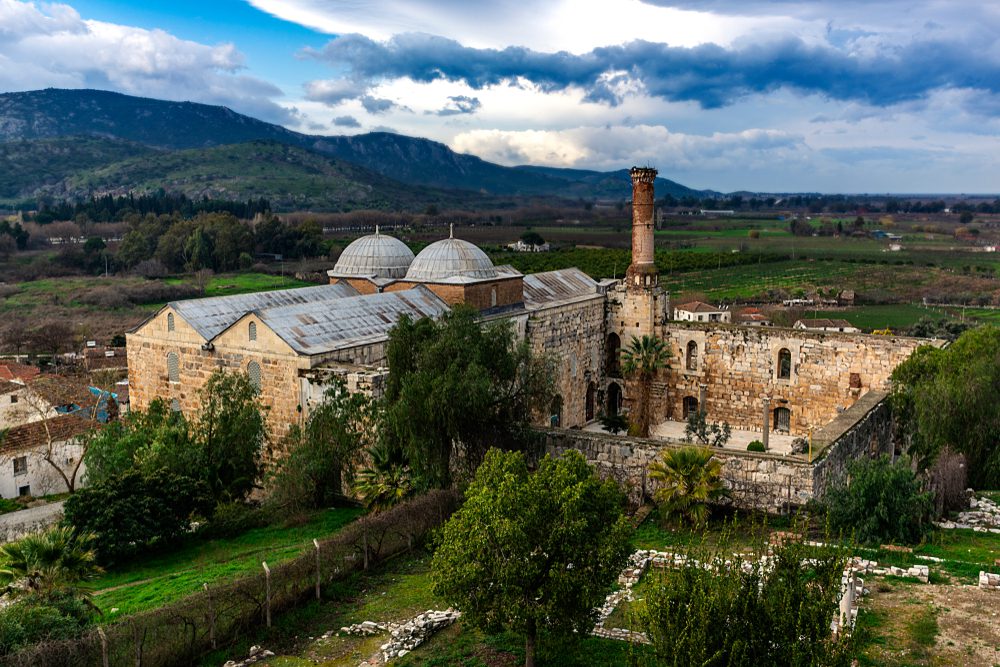
Isa Bey Mosque was built by Isa Bey from Aydınoğulları between 1374 and 1375 on Ayasuluk Hill. It is one of Anatolian mosque architecture’s first and most beautiful examples. Cut stone blocks extracted from the Temple of Artemis were used to construct the mosque. You enter the mosque through a magnificent crown door.
Although it has rich decorations and tiles, it is quite plain compared to Ottoman-period mosques. The west side walls of the mosque are covered with marble, and the other facades are made of cut stone. Various tombstones belong to the Principalities Period in its garden. It was also used as a caravanserai in the 19th century. In its immediate vicinity is the Isa Bey Bath, which is in ruins.
Temple of Artemis (Diana)
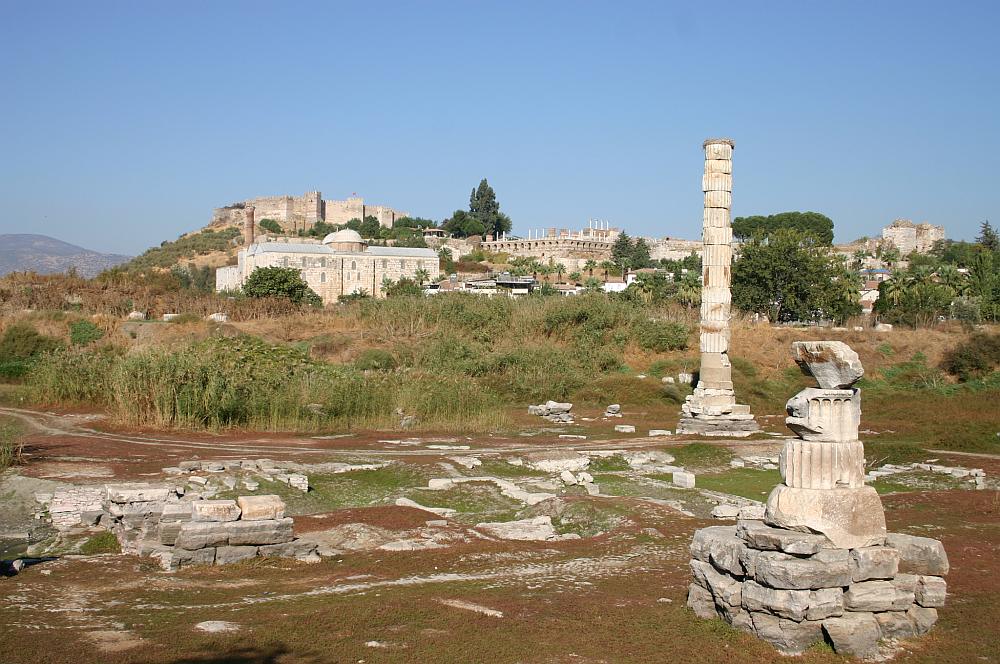
The Temple of Artemis was made entirely of marble in 550 BC by the Lydian king Croesus (Karun), dedicated to the Goddess Artemis. It was one of the 7 wonders of the ancient world. It is the first architectural work on the largest monumental marble scale in ancient times. The temple, built on the sanctuary by the greatest sculptors of the period, is estimated to be 125 meters long, 65 meters wide, and 25 meters high.
The site of the Temple of Artemis was a sanctuary belonging to Cybele, which the people of the region worshipped. The Temple of Artemis was a religious building and a marketplace where the Ephesians offered their faith in the goddess. The marbles of the temple, which fell into ruin after a fire, were used elsewhere.
Unfortunately, not much remains of the Temple of Artemis. A few columns and some blocks remain from the ruins. You cannot tour the area; you can only take pictures. Two statues from the Temple of Artemis are in the Selcuk Museum today. Some relief columns and Archaic column capitals belonging to the Temple of Artemis are in the British Museum. The visit is free.
Dutlu Road, which starts from Selçuk Gendarmerie near the Temple of Artemis, extends to Pamucak Beach. The road where the Seljuks walked and biked turns colorful in autumn.
Ephesus Archeology Museum
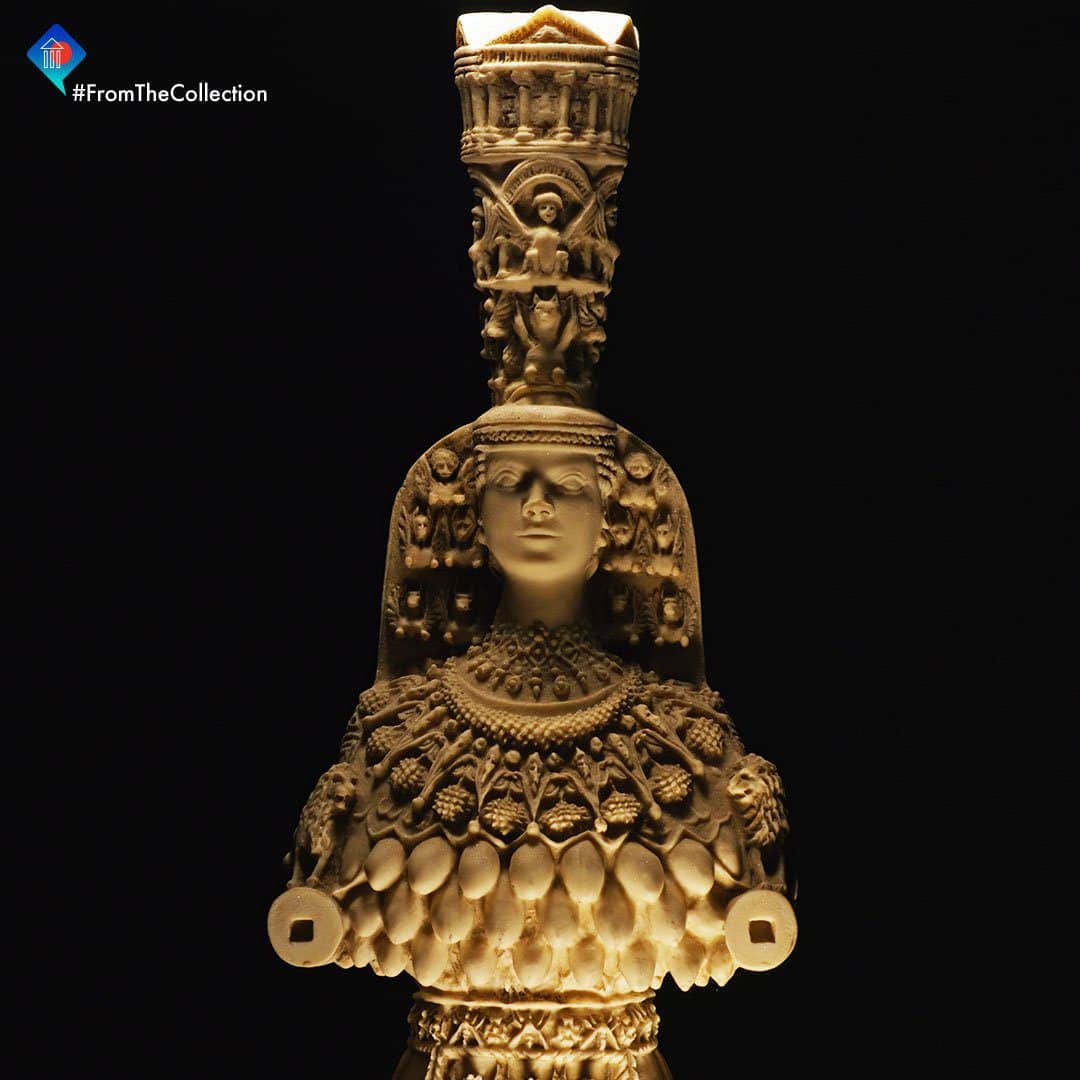
Even though it is not very popular in Selcuk, Ephesus Museum is one of the underrated Selcuk Attractions! Ephesus Archeology Museum, one of the most beautiful museums in Izmir, is located in the center of Selçuk. It is one of the most visited museums in Turkey. Ephesus Artemis Statue is the most original piece exhibited in the museum, which contains approximately 50 thousand artifacts from the Mycenaean, Archaic, Classical, Hellenistic, Roman, Byzantine, Seljuk, and Ottoman periods in Ephesus and its surroundings. Artemis is a mother goddess who is the symbol of fertility and fertility.
Dolphin Eros Statue, Socrates Head, Isis Statue, and Priapos Statue are some of the world-renowned works of Ephesus Museum. Ephesus Museum entrance fee is 10 Euros (2025). Right next to it is Turkey’s first Turkish bath museum, the Saadet Hatun Hamam Museum, built by Saadet Hatun in the 16th century.
Selcuk Urban Memory Center
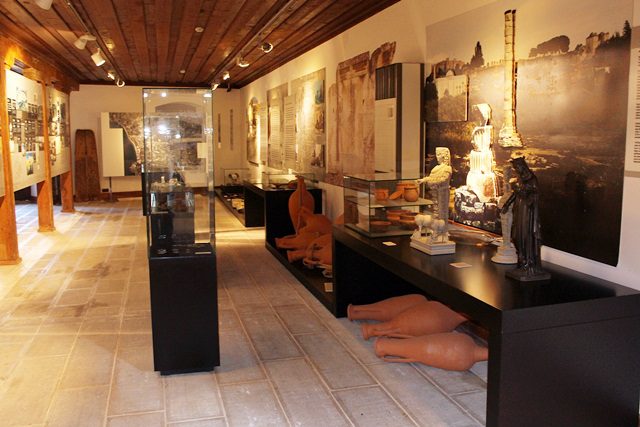
One of the Selcuk Attractions is Urban Memory Centre, which opened in 2012 in a historical tobacco warehouse. The historical building, which was used as the director’s office and tobacco warehouse in the Ottoman Period, has been restored, revealing the distant and recent history and urban memory of Selçuk, from the knowledge of the ancient period to the pain of the population exchange.
Byzantine Aqueducts
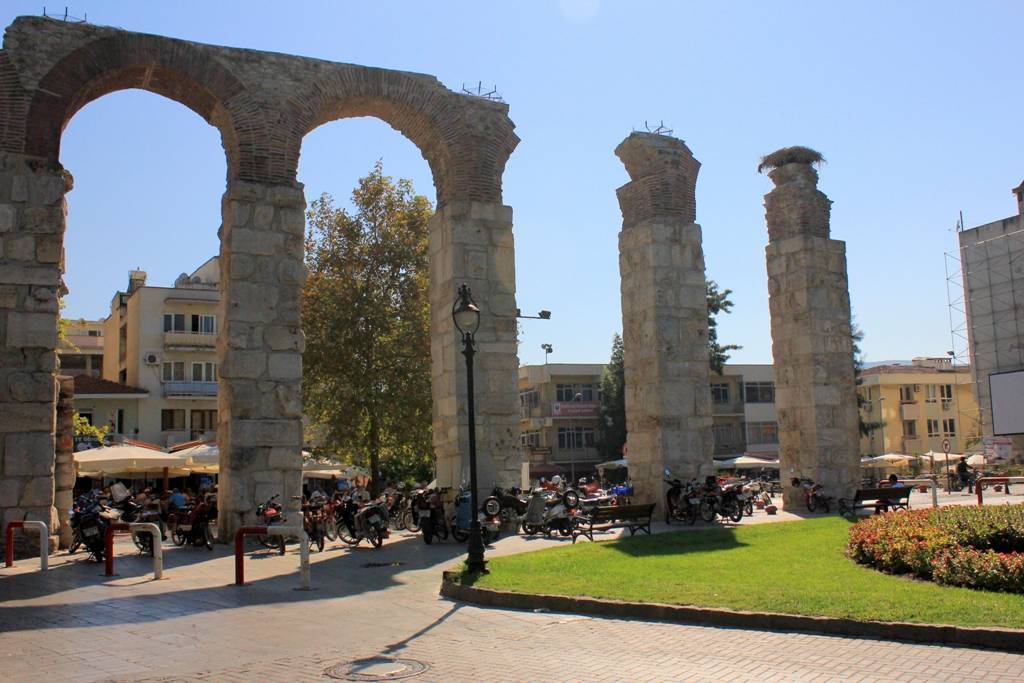
The places to visit in Selcuk make you feel like you have traveled in a time tunnel. There are many archaeological remains from different eras. One of the must-see cultural heritages of Selçuk is the aqueducts built in the Byzantine period in the city center.
The arches located opposite the Historical Selçuk Train Station, the second-largest station of the İzmir-Aydın railway, the first railway line of Anatolia, were built to meet the region’s water needs. Right across the street is the historical Mr., which was built on Selcuk’s oldest hotel site. Carpouza Cafe is located.
Ephesus Ancient City
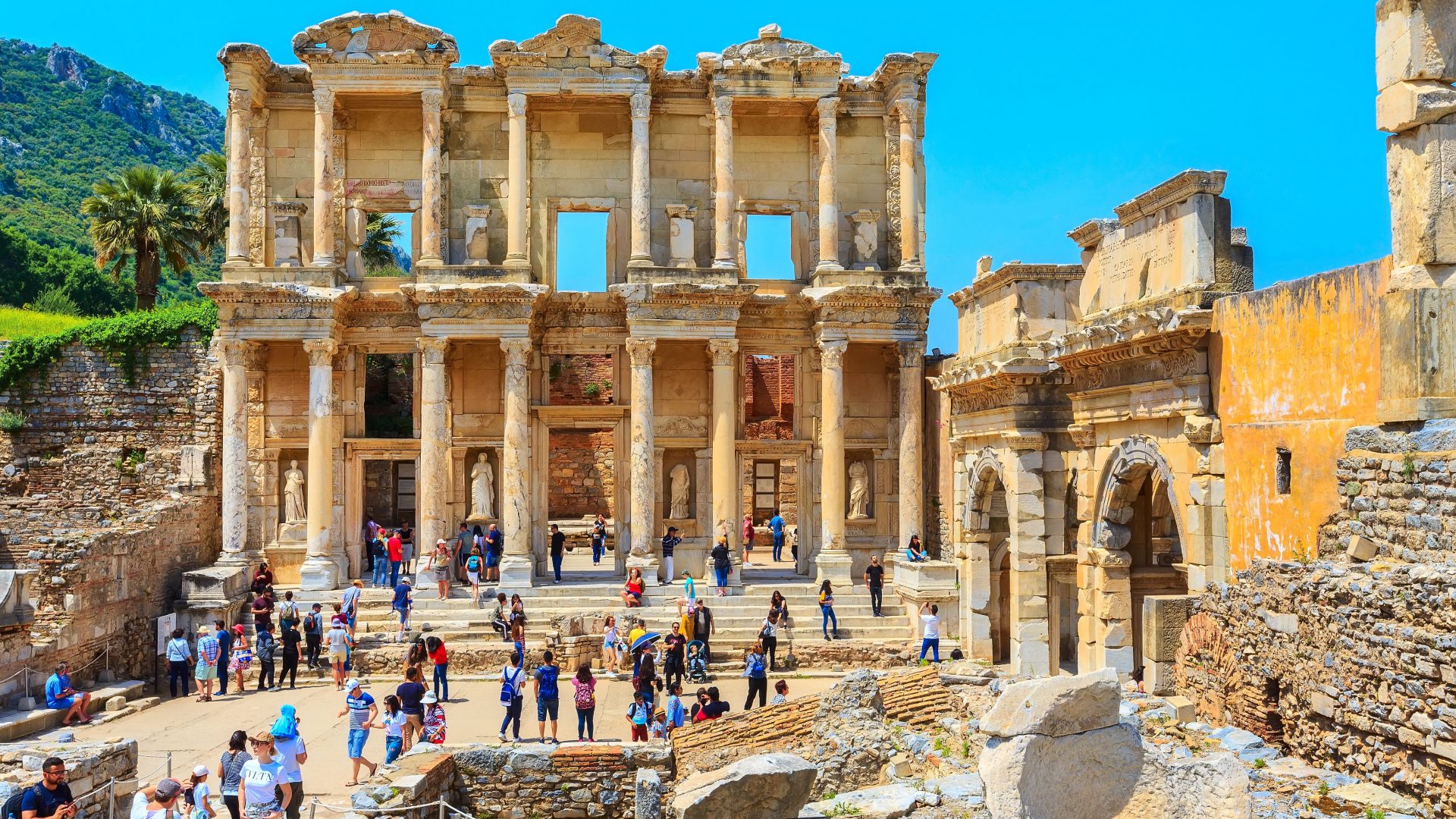
Even though the ancient city of Ephesus ranks first in the list of Selcuk Attractions, we did not put the places to visit in order (Everyone has different tastes and priorities.).The Ancient City of Ephesus is a precious ancient city that has hosted the best representations of urbanization, architecture, and religious history from the Hellenistic period to the Roman period and from the Roman period to the birth of Christianity and its institutionalization. It has the most refined and improved examples of architecture and urban planning from different eras.
The magnificent city gates, monumental structures, baths, lecture and imperial halls, public toilets, fountains, areas where trade and shopping were carried out, and houses belonging to the city’s upper class have been largely preserved and can be visited today.
Architectural monuments from the middle of the Roman period remain too solid to be experienced anywhere else with the same intensity. You can clearly see this while walking around the marble streets. Celsus Library and Hadrian’s Fountain are important places in the ancient city.
The Church of Mary (Consul Church), which has an important place in the history of Christianity, is famous for being the place where the Consul Meeting was held in 431, where the main lines of the Christian religion were determined. I recommend you visit Ephesus with a guide. Listening to the stories of the buildings you will see is a must. You have to spend at least half a day. Go early in the morning during the summer season. Ephesus Ancient City entrance fee is 40 Euros (2025).
If you are planning to visit Ephesus Ancient City, check our guide Ephesus Ancient City: How to get from Selcuk? – Transportation Guide
House of Virgin Mary
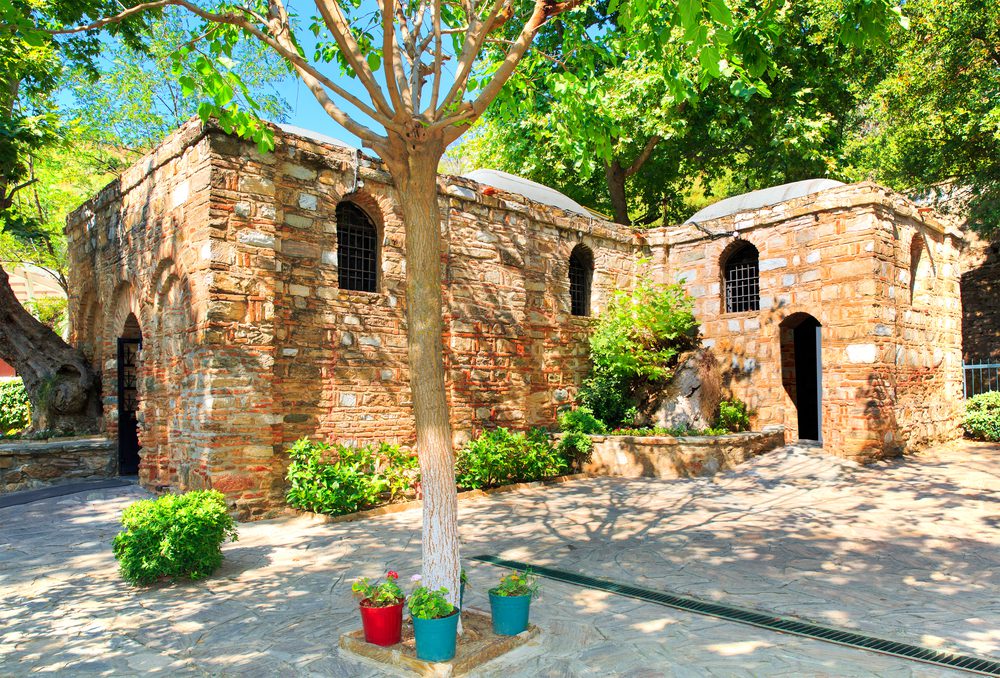
The House of the Virgin Mary is a sacred place, which is most popular with both Christians and Muslims, with its historical, cultural, and archaeological texture, located on the Bülbül Mountain, near the Ancient City of Ephesus. Pope IV. Paul declared it an official pilgrimage center for the Christian world.
Every year, tens of thousands of Catholic Christians visit the House of Virgin Mary to become pilgrims. Hz. Mary’s, St. In this house, where she was accepted and declared as the mother of Jesus, St. It is believed that she spent the last years of her life with John. According to rumors, the house that the German nun A. Katherina Emerich saw in her dream was researched and found, and then it became a holy temple where healing was sought and sacrifices were made.
In the Christian world, it is believed that the Virgin Mary ascended to the sky on August 15, and a ritual is traditionally held every year on this date in the garden of the House of the Virgin Mary. Christians become pilgrims here by lighting candles and drinking water from the three fountains symbolizing money, love, and happiness. The Virgin Mary’s House, which is 9 km away from Selçuk, can only be reached by taxi and private vehicle. The House of Virgin Mary entrance fee is 500 TL (2025).
If you are planning a visit to the House of the Virgin Mary, check our guide House of Virgin Mary: How to get from Selcuk? Transportation Guide
Grotto of the Seven Sleepers
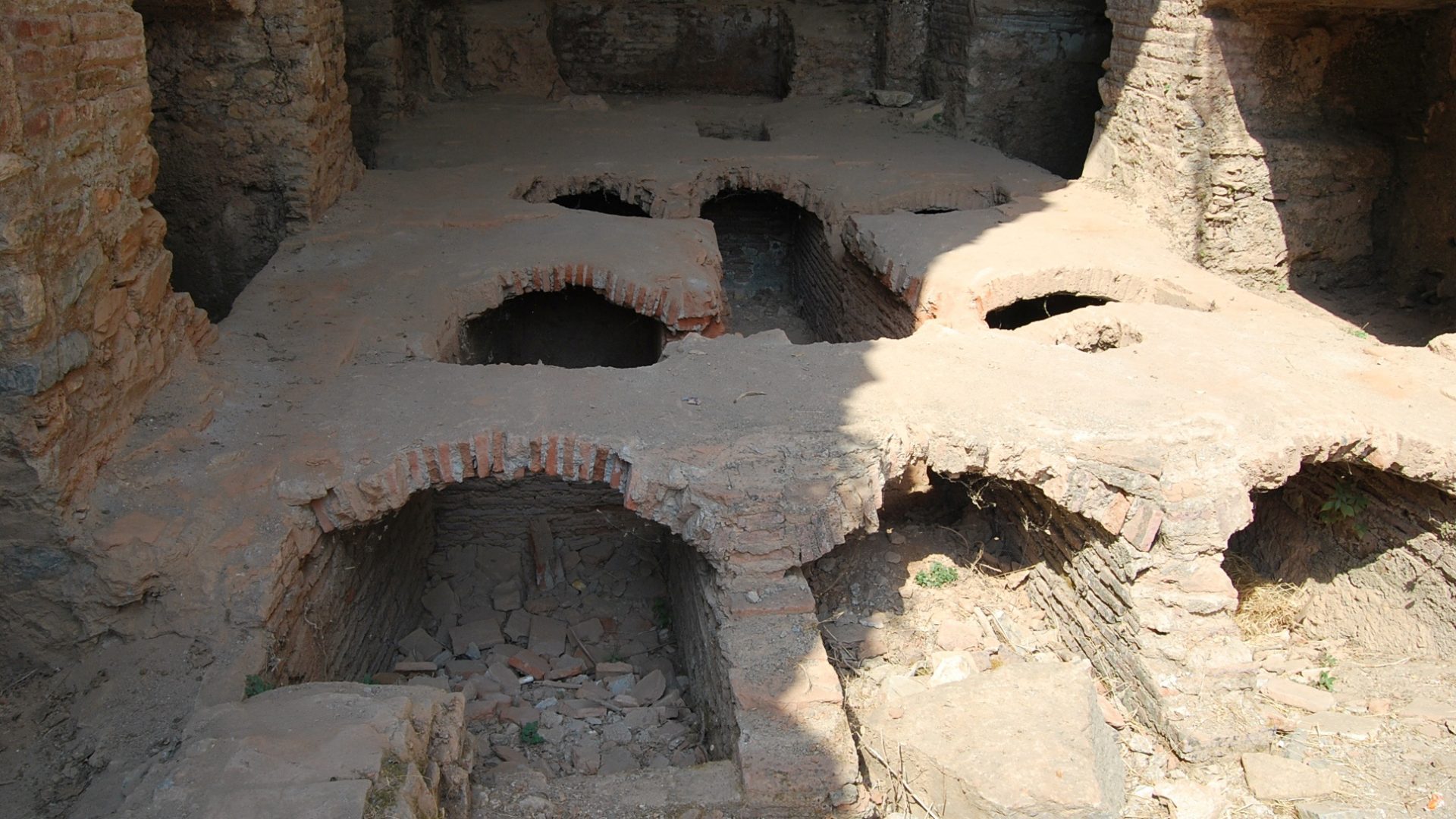
Seven Sleepers is a religious center, built in the 5th and 6th centuries AD, located on the back slope of the mountain where the Ancient City of Ephesus is located. It is also claimed to be one of the caves of Eshab-ı Keef. According to the rumor, 7 young people who escaped from the pagans and took shelter on the skirts of Panayir Mountain in the early periods of Christianity fell asleep there.
When they woke up two centuries later, they discovered Christianity was the official religion. Due to this miraculous event, 7 young people considered holy people are buried in this cave after they die. Today, the structure unearthed during the excavations is quite large and monumental, and most of the rock-cut tomb finds two churches and catacombs have been found.
33 places on Earth claim to be within the borders of the Seven Sleepers. Most Christian sources refer to this Cave of the Seven Sleepers in Ephesus as the main cave.
Pamucak Beach

Pamucak Beach, also known as Ephesus Beach, is a magnificent 11 km long beach located 8 km from Selçuk and 6 km from the Ancient City of Ephesus. The width of the golden sandy beach is about 80 meters. The beach is one of the longest beaches in Turkey. Towards the middle of the coast, the Küçük Menderes River meets the sea.
Pamucak Beach is highly preferred for its Blue Flag, clean sea, sandy structure, and suitable water sports and camping. In addition to many touristic facilities, Pamucak has a picnic area in the forest, a camping area, and five-star hotels.
Sirince Village
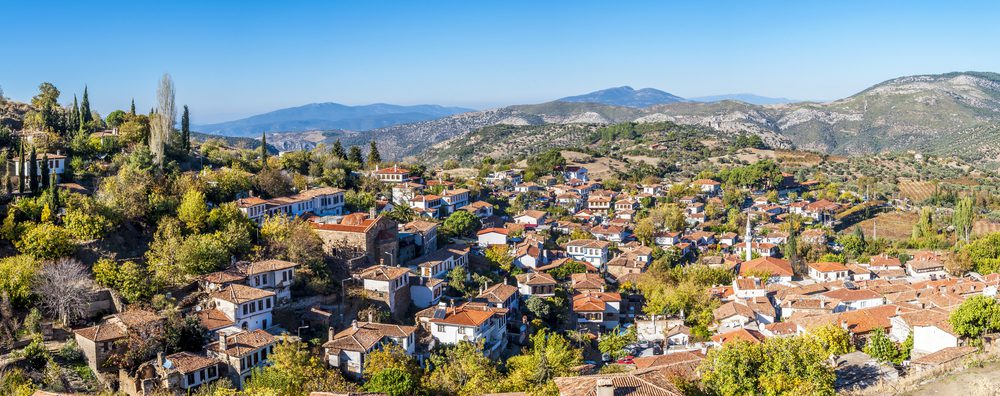
Sirince is a charming Greek village located 85 km from İzmir and 8 km from Selçuk. They are lined up like pearls on a hill adorned with fig, olive, and cypress trees not to interrupt each other’s view. All of the whitewashed village houses with suspended balconies have 2 floors.
First, you must get lost in its stone-paved streets, which do not enter vehicles and extend like a labyrinth. One of the two remaining churches in the village, St. See the John the Baptist Church. Eat herbed pancakes from village aunts, and buy homemade tarhana, tomato paste, and thyme from the mountains.
You can buy handmade needlework covers, shawls, rag dolls, and ceramic ornaments. Although fruity wines are famous, I don’t like them. Wines are not Sirince wine anyway. Drink pomegranate juice instead of bad wines made with fruit syrup.
If you are planning a visit to Sirince Village, check our guide Sirince Village: How to get from Selcuk? – Transportation Guide
Exploring Selcuk with a Tour
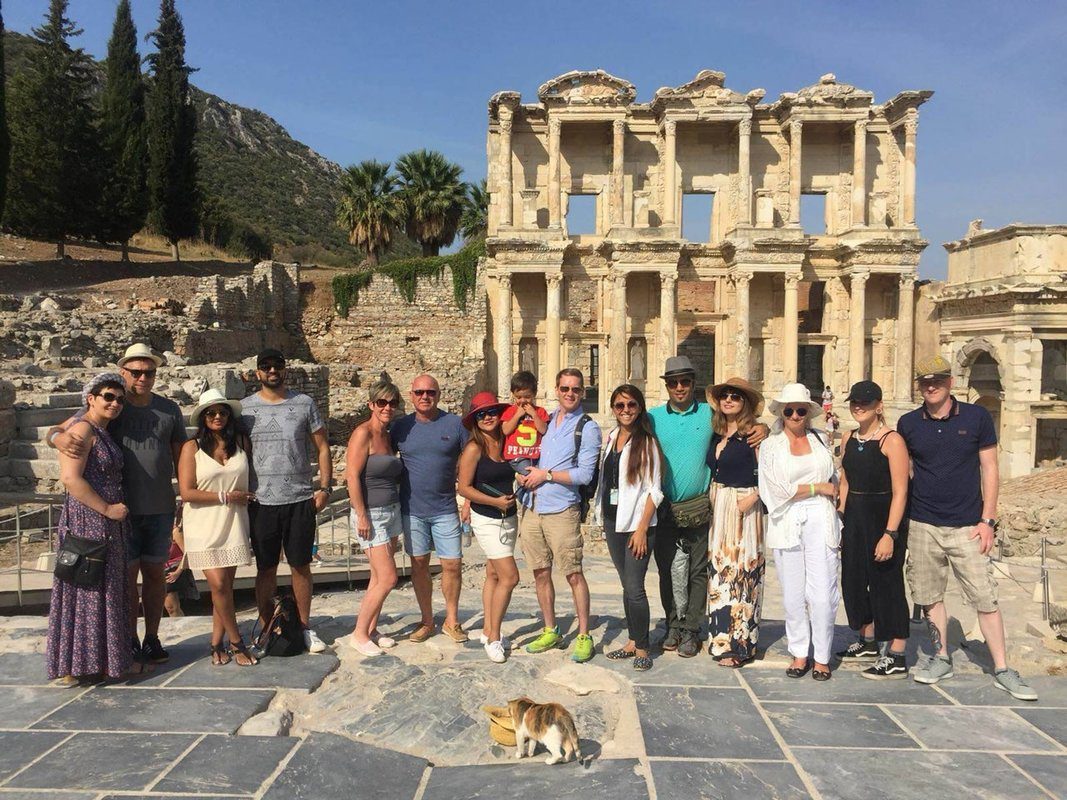
Visiting Selcuk with a Selcuk tour is a much better option than visiting on your own. One of the major benefits of taking a tour is that you have the flexibility to create your own itinerary, and we’ll make it a tour. This means that you can choose which sites and attractions you want to visit, and your tour will be tailored to your specific interests and preferences. This is a more personalized and enjoyable experience and allows you to make the most of your time in Selcuk. In addition to the flexibility to create your own itinerary, tours are more cost-effective than taking a one-way taxi and include the services of a knowledgeable guide who can provide insights and information about the sites you’re visiting. Finally, don’t forget that the cost of entrance fees to these sites is often included in the price of the tour, saving you even more money. Overall, taking a tour of Selcuk is the best way to make the most of your visit and ensure that you have an enjoyable and memorable experience.
Check our Selcuk Tours & Travel Tips page before planning your visit to Selcuk!



